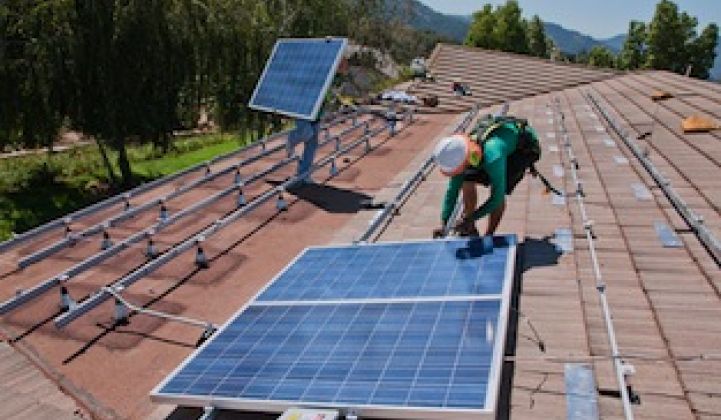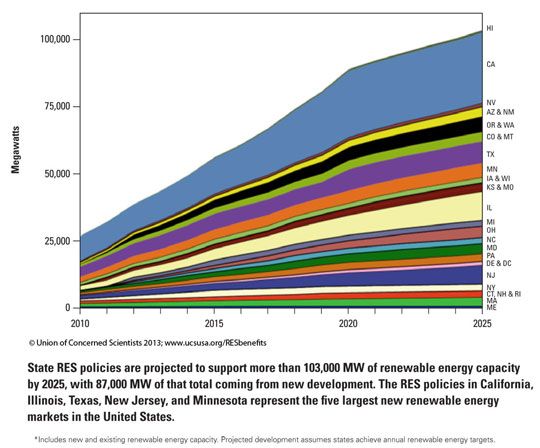Late last year, a study found that California's 33 percent renewable portfolio standard (RPS) could result in a "rate impact bomb" in coming years.
A new report from the Union of Concerned Scientists, however, found that for fourteen of the 29 states with an RPS where data was available, all but one had a cost increase of 1.6 percent or less.
The examples came from across the U.S.: Michigan was on track to meet its 10 percent RPS at lower costs than anticipated; Xcel Energy has anticipated that meeting the RPS in Minnesota by 2025 would cost an additional 1.4 percent; Rhode Island’s RPS is costing households an extra 62 cents per month in 2010; and Duke Energy customers in North Carolina paid an extra 21 cents per month in 2012 to support the state’s RPS.
The state standards have been a key driver of renewable generation in recent years, and 2012 was the first year that all states with an RPS had to meet compliance targets. Some states, including Colorado, Texas and Minnesota, are all ahead of schedule. By 2025, the programs will have supported more than 100,000 megawatts of new generation, according to the report.
Although the Union of Concerned Scientists finds encouraging trends when it comes to price increases related to the implementation of RPSs, the reality is that for most regions of the country, the cost of delivering power will likely go up over time. The promise of lower costs, whether for smart grid or renewable generation, is a tricky message to deliver when monthly utility bills will rise for most consumers in decades to come.




